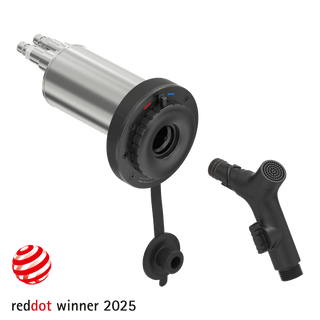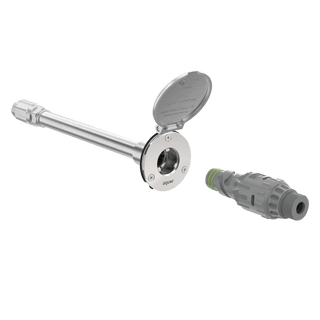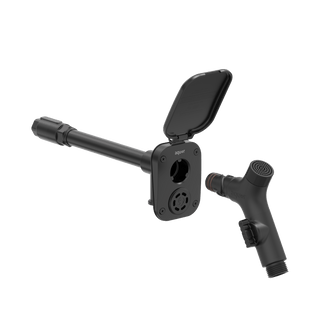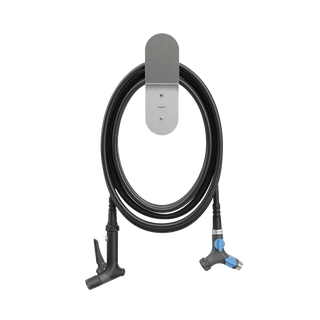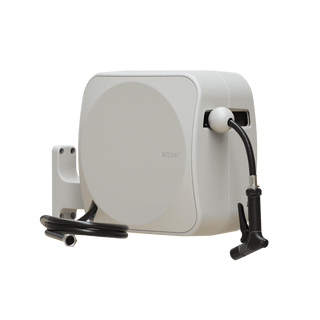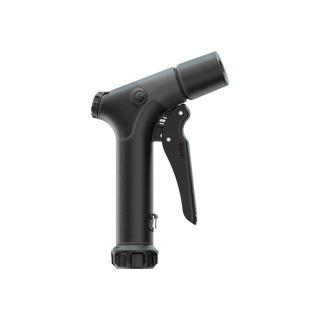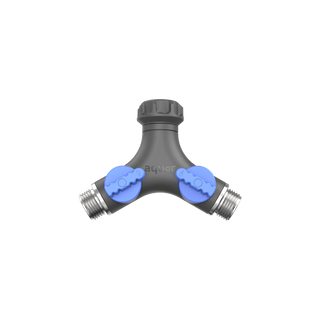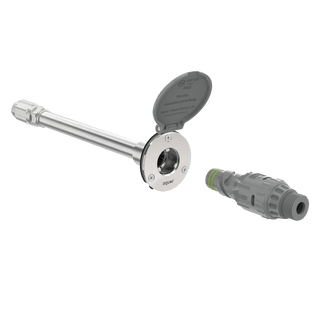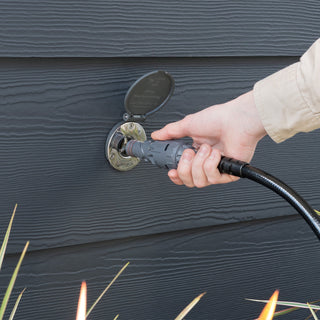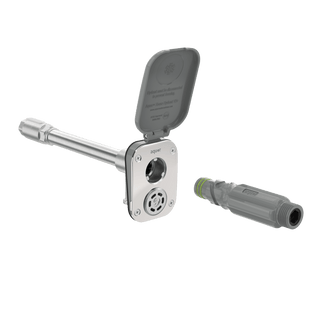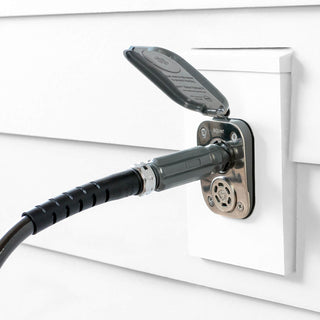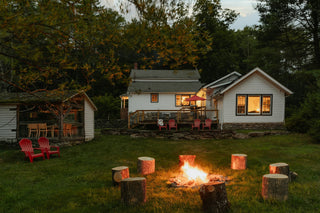The Best Frost-Free Outdoor Faucets 2023

Whether you garden, wash your car, or regularly rinse off the family dog, an outdoor faucet is an essential fixture that nearly every home requires. Because outdoor faucets are exposed to the elements, they generally need to be more durable than typical indoor fixtures—especially for homeowners that experience cold winters.
You should consider installing a frost-free spigot for year-round water access and plumbing protection. There are many frost-free units on the market to choose from, so it’s important to understand how they work and what you should look for.
How are frost-free faucets different from standard outdoor faucets?
Frost-free faucets and standard hose bibs are very similar. The key difference is the location of the shut-off valve. Standard bibs usually have a shut off valve located closer to the exterior of the home. Because water comes all the way up to the front of the stem, the faucet is less protected from outside elements and will be prone to freezing in cold climates.
On the other hand, frost-free spigots have a shut off valve positioned at the back of the stem where the piping connection is protected by insulation. This design also allows residual water to drain, eliminating the need to turn off the spigot’s water supply every winter.
What to consider when choosing a frost-free faucet
Size (Stem Length)
Before buying a frost-free spigot, you will need to choose the correct stem length—the length will differ from home to home. If your faucet’s plumbing connection is located in-wall (within drywall), you will most likely need a shorter stem length ranging from close-couple to 6”. The precise size will depend on your home’s siding. If the faucet extends through the wall into an open area, such as a basement or crawl space, you can choose a longer stem. In this instance a 10” or 12” spigot should work.
Installation & Maintenance
Usually outdoor faucets are relatively easy to install. The most important factor to consider is the type of plumbing connection you need. Frost-free spigots generally include a male or female threaded inlet. Depending on your current piping (PVC, Copper, or PEX), you may need an adapter to complete the connection.
Vacuum Breakers
The plumbing code in most areas requires outdoor faucets to have vacuum breakers. Either a vacuum breaker or a check valve will prevent contaminated water from traveling back into the clean water supply. Some frost-free units have built-in vacuum breakers, while others include attachments with backflow prevention.
Design & Ergonomics
The aesthetic of an outdoor faucet may also be something worth taking into consideration. Traditional spigots often have brass or chrome finishes, while modern flush-mount units are available in more trendy finishes, such as matte black stainless.
If you want to factor in ergonomics, valve design is also important. There are a few outdoor faucet handle and connection options to choose from:
- The classic valve wheel is a widely available handle design
- Quarter-turn handles offer easy water activation
- Quick connections provide simple and fast water access
Materials
Homeowners should consider two types of frost-free outdoor faucet compositions: stainless steel and brass.
Stainless Steel Outdoor Faucets
Stainless steel is the best frost-free outdoor faucet material for several reasons. Stainless steel has 7X more frost protection than brass, plus it's sustainable.

Aquor House Hydrant V1+
Because stainless steel has low thermal conductivity, it is able to effectively retain heat from within the home. This retention helps prevent heat from escaping your home through thermal bridging and reduces moisture development on the stem. Additionally, stainless steel is one of the most sustainable building materials in the world—it’s 100% recyclable. 
Aquor Water Systems manufactures 100% marine-grade stainless steel outdoor faucets, which offer all the benefits of stainless steel while boasting a sleek modern design. Aquor’s House Hydrants employ a quick-connect system making water access and winterization an easy one-second process. All it takes is a simple push and twist, eliminating the need to constantly thread hoses. To turn the water off, simply unplug the connector, and any remaining water will drain out! No need to shut off your water supply or use foam covers.
Brass Outdoor Faucets

Generic brass outdoor faucet
Brass outdoor faucets are another option for homeowners. Brass is the most common material used for frost-free outdoor faucets, making these sillcocks widely available and easy to find. Brass outdoor faucets have good corrosion resistance and are able to stand up to relatively cool temperatures. Several brands offer frost-free brass units, all of which are comparable. While brass spigots may be more affordable initially, stainless steel outdoor faucets have a longer lifespan and generally require little to no maintenance or replacement down the road.
Conclusion
As winters continue to reach extreme levels, it’s becoming more important to have frost-free spigots installed in your home. Even typically warmer regions are experiencing winter storms, the 2021 Texas Freeze being a recent example. Bursting pipes due to freezing water can cause thousands of dollars in damage, so having that extra defense against icy conditions is a worthwhile investment.
Interested in learning more about frost-free outdoor faucets? Watch Matt Risinger, a renowned building science expert, speak on protecting your faucet from freezing.

